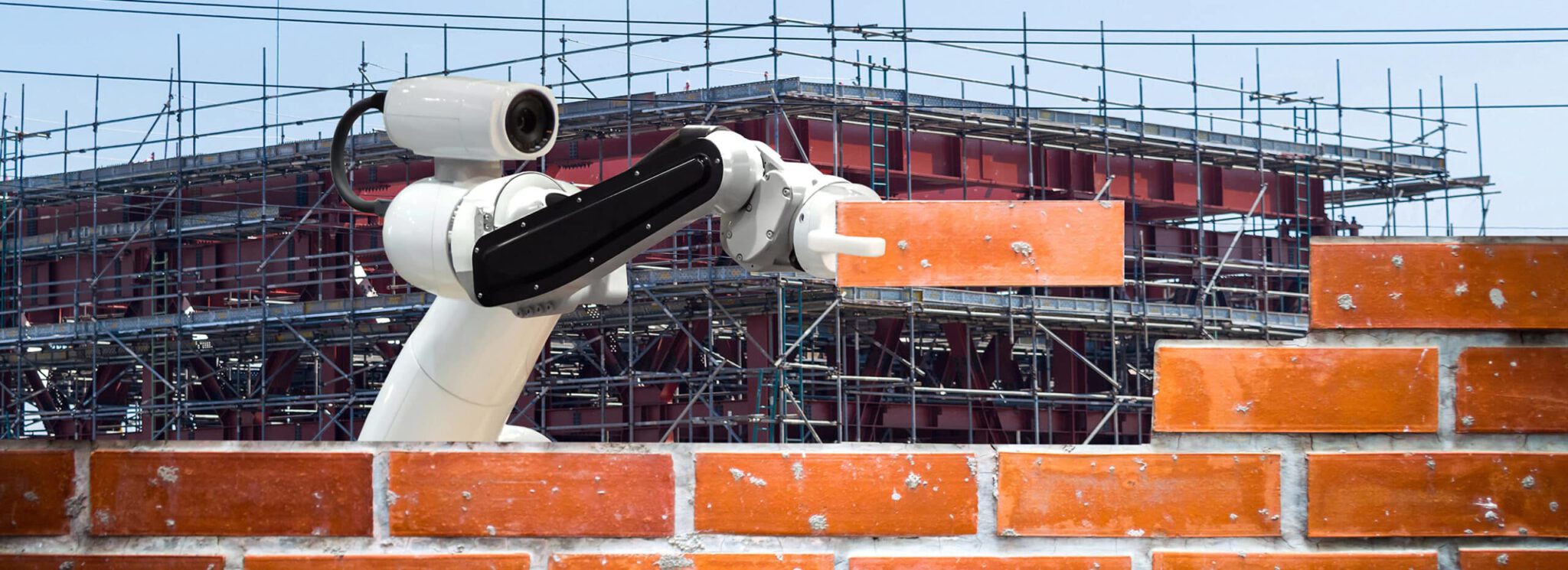Data from McKinsey and Company
reveals that labor productivity in construction has not kept up with overall economic productivity. The part that will not surprise many is that out of all the industries, construction uses the least amount of technology. Fortunately, that’s changing as construction technology shows signs of life.
What prompted the industry to straggle in technology and innovation? This, especially when technology offers the opportunity to increase productivity, cost savings, and safety.
Why Construction Technology Lags
According to Entech, these are the three reasons the industry lags:
- Uses pen and paper for estimation and bids.
- Lacks the infrastructure to incorporate mobile and desktop tech.
- Relies on spreadsheets for managing projects.
Now that’s changing as the industry sees incredible technological advancements. Part of that is because more tech-savvy employees have entered the construction industry. The other part is the wave of Baby Boomers retiring.
“Construction is falling behind in the innovation race” says that the older and younger generations have struggled to work together because of the technology divide or the absence of it.
With Baby Boomers retiring in droves in the next few years, younger, technology-savvy generations are taking their place. This will further drive the growth of innovation and progress.
Start-up Accelerator Accelerating Construction Technology
Virgin Startup
is another reason for the jump in construction technology. It’s a nonprofit that helps entrepreneurs turn their ideas into a reality. Yes, as in that company founded by Sir Richard Branson.
With the launch of ConstruTech, the first construction technology accelerator program, Virgin Startup wants to encourage innovation in construction. Construction startups apply for the six-week program. Virgin works with the selected companies by providing office space, mentoring, product validation, and a go-to-market strategy. They will also help with funding and resources to scale the business.
ConstruTech has selected startups that can solve three challenges:
- People:
Provide staff with resources and tools to be more productive. - Smart materials:
Increase efficiency while slashing the impact on the environment. - Data:
Capture data and figure out the best ways to learn from it.
That’s a good sign of big changes coming in the industry. It will be exciting to see what comes out of the accelerator.
More Signs of Construction Technology Growth
One of the coolest construction technologies is the investment in the development of construction materials. A few of these make a difference to the environment because they use recycled materials. Buildings benefit because some of the materials are energy-efficient, endure harsh weather conditions, and last longer.
It’s worth it for companies to explore construction technology to find the right ones to capitalize on. Those who do will enhance the safety of their worksites and jump ahead of the competition in terms of efficiency, productivity, and costs.
Wait until you see the available technology that will have a positive impact on the bottom-line, efficiency, and productivity.
New Construction Materials
Researchers around the globe have developed cheaper, more durable, and more environment-friendly smart materials.
Here are seven new and interesting construction materials you want to know about.
1. CABKOMA strand rod
Made from thermoplastic carbon fiber, the CABKOMA strand rod is a whopping five times lighter than a metal rod and more durable. Because it reduces the strain on the building structure, it can withstand earthquakes. As a result, many companies retrofit buildings with this carbon fiber. On top of all these benefits, it improves the building’s aesthetics.
2. Cigarette butts
This may seem like a stinky idea at first. However, it’s a powerful solution to the more than 1.2 million tons of cigarette butts that end up in the landfill every year as reported by RMIT University scientists.. These can be recycled into lighter, more durable, and energy-efficient bricks. They reduce brick production costs and take a little pressure off the environment.
3. Cooling bricks
It sounds like the stuff of science fiction, but it is very much real. Institute for Advanced Architecture of Catalonia (IAAC) has developed a passive system for cooling and ventilation called hydroceramics. When you apply this process to bricks made from clay and hydrogel, it turns them into cooling bricks.
As the air enters the brick, its hydrogel absorbs the water and stores it. Then, on a hot day, the bricks release the water to cool the building. By potentially lowering indoor temperatures up to six degrees, these bricks can drastically cut energy consumption in big buildings.
4. Light-generating cement
Imagine lighting up the road at night without lights and roadside reflectors. UMSNH of Morelia’s Dr. Jose Carlos Rubio Avalos makes this possible by developing cement that can absorb and expose light. When made at room temperature, the cement uses less energy. This illuminating cement
traps sunlight and releases it at night to create a glowing surface. This saves on street lighting costs and reduces the number of lights needed. It’s ideal for swimming pools and sidewalks.
5. Breathing bricks
More science fiction? Nope. Scientists at Cal Poly have created pollution-absorbing bricks that act like an air filter. Breathing bricks
work like mini vacuums by sucking in polluted air, filtering it through a cone, and then releasing the clean air into the environment. Construction companies can use this passive air filtration system on existing buildings and meet commercial structure air quality regulations.
6. Self-healing concrete
Repairing cracks in the concrete is time-consuming and expensive. Delft University’s Dr. Erik Shlangen solves this problem with self-repairing concrete. In short, it repairs itself when heated. As it cools, the melted material joins together. Building and maintaining buildings, bridges, and tunnels will cost less with self-healing concrete.
7. Translucent wood
Researchers at KTH Royal Institute of Technology have discovered a way to make wood translucent and mass produce it. The best part about this is that wood is one of the cheapest and most available resources. The researchers produce translucent wood
by removing the lignin to turn it white. The next step is nanoscale tailoring to make it transparent to allow light to pass through. Good uses for it are in windows and solar panels.
Wearables
The booming wearables industry has spilled over into construction. ABIresearch predicts that wearables will sprout from $247 million in 2017 to $838 million by 2022. Companies have found ways to integrate wearables into personal protective equipment (PPE) to improve safety.
It happens to everyone. We all have occasional days where we feel tired or sluggish. This is a dangerous thing for construction workers. Wearables like the Cat Smartband
can help detect potential worker fatigue hours ahead.
Employees wear a cloud-compatible band that reviews sleep factors such as time of day, quantity, and consistency. After doing a little behind-the-scenes magic, the system gives a score to each worker that predicts how much the workers’ fatigue may change during their shifts.
For example, most people score in the 80s or 90s on a typical day, which is a low to moderate fatigue risk. A score of 70 or below indicates someone’s fatigue level is comparable to driving drunk. The smartband also works with a mobile app that allows wearers to monitor their fatigue levels.
Another example of wearables in construction is a hardhat equipped with a kit containing safety capabilities. The Shimbaun IoT helmet
can monitor motion, temperature, and location and emit a warning when a worker becomes overheated or lightheaded. When it senses a worker has fallen, it triggers an emergency call to first responders.
When you combine wearables, Internet of Things (IoT), and augmented reality, you get Microsoft Hololens. It offers hands-free access to building plans, 3D model superimposed onto a site, measurements, and remote support. Workers can get another pair of eyes on the ground by teleconferencing with remote colleagues from the field.
Internet of Things (IoT)
At is simplest, the Internet of Things
lets machines and equipment to connect and communicate with each other. Along these lines, IoT helps construction machinery, equipment, and structures to connect with each other. One example is smart structures that come with vibration sensors. They act as an early warning system that detects and corrects deficiencies.
Sensors can do much more than this. They can track readings of temperature, pressure, locations, and other conditions in real-time. Sensors can also tell a machine to take action. Implementing IoT on inventory can help predict when it’s low and notify the site managers to order more supplies.
One product called the Spot-r is like the smartband. It combines a belt clip, dashboard, and the network to provide management with visibility into safety, resources, and workers. The clip contains a button for reporting hazards or sending distress signals to designated supervisors from anywhere on the worksite.
If a situation requires job site workers to evacuate such as a protesting crane climber, authorized personnel can set off emergency alarms on everyone’s device. It can also record workers arrivals and departures to keep track of their whereabouts.
Radio frequency identification (RFID) like Caterpillar Cat Detect for Personnel can increase safety. You insert the RFID tag in PPE like hard hats and safety vests. Then, add an antenna on equipment that communicates with the RFID tag.
For example, you put antennas on equipment such as bulldozers and backhoe loaders. A groundworker wearing a hardhat with an RFID tag is behind the equipment. If the operator hits reverse, then he will get a visual and audio warning. This tells the operator to stop and check the situation. The antenna detects the worker whether crouching or standing.
Robotics
The Commercial Construction Index shows a labor shortage in construction with more than half of those surveyed reporting that finding skilled workers continues to be a challenge. One way to solve that is with repetitive automation.
The average bricklayer handles about 500 bricks per day. A robot bricklayer
called Sami-Automated Mason, or SAM from Construction Robotics can place 380 bricks in one hour! The company says it increases productivity by three to five times and reduces lifting by 80 percent.
Other repetitive automation solutions include a Robo-Carrier for the unmanned transportation of supplies and heavy pallets and a robo-welder that welds steel columns. Robots can also handle concrete recycling, spool fabrication, and demolition.
Live Remote Monitoring
Although construction technology and innovations save millions of dollars and can increase productivity, construction security
remains a high priority. Vandalism, theft, and crane climbers can cost a company a lot of money. With the right video surveillance solution, the company can see a fast ROI as well as improve worker safety and boost productivity.
Live remote video monitoring combines video analytics with trained security operators to watch activity in real time. The operators can activate speakers at unwanted trespassers or contact police if the situation warrants. This proactive solution helps maintains a secure environment while minimizing liability and reducing costly guard expenses. It is very effective at safeguarding unmanned and remote locations, gates, perimeter fences, equipment, cranes and other valuable assets.
These new technologies will help companies build cheaper and environmentally friendly buildings while delivering huge cost savings. Still, this does not mean a company should implement all these technologies. Each investment needs to make good business sense.
If you’d like to learn more about intelligent monitoring and analytics that rely on artificial intelligence in construction, please contact us.

